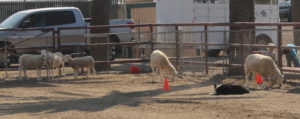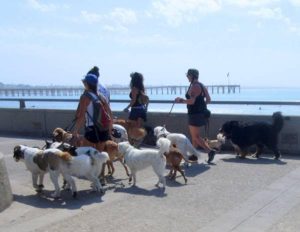
• The Herman Bennett Foundation is having their 4th Annual “Haunted Dinner, Magic, and Dancing” at the Bard Mansion October 28, from 6:00 pm – 10:00pm.
This fundraiser is to support these dog programs:
Help Military Dogs with their medical needs when they return from service
Ventura Police K-9 Unit (not paid for by the City)
Ventura County Animal Services (VCAS) Camarillo Shelter, a “No Kill” shelter
Vouchers for Low income families Spay/Neuter (cats & dogs) & Feral cats
Support of Animal Rescue Groups
This exclusive fundraising event has grown in both popularity and exposure over the past 3 years.
The event is held at the Historic Bard Mansion on the Port Hueneme Naval Base. It includes a formal sit down dinner, wine and beverages, Magician Bob Bolivar, Ghost Hunters Richard & Debbie Senate, live music by CosoLive, laughs provided by comedian Jason Love, a charity raffle and so much more!

Tickets are $140 each, 6 or more tickets are only $100 each.
Call 445-7171 to reserve or visit our website:
Sponsorship opportunities may still be available! See website for details.
hermanbennettfoundation.org/events
• Many humans aren’t aware of the Halloween dangers to their loving pets. All that candy might be lethal for pet dogs and cats. They can’t metabolize candy like humans.
Chocolates contain caffeine and a compound called theobromine, which can be toxic in certain doses to both dogs and cats. Cats (poor things)can’t taste sweet so aren’t necessarily as drawn to chocolate as dogs. Theobromine is more concentrated in darker chocolates so that type is particularly bad.
Symptoms of eating chocolate are vomiting, diarrhea, trembling and hyperactivity.
Xylitol, a sugar substitute found in some sugarless gums and candies can cause hypoglycemia, seizures and even liver failure in dogs. Symptoms of xylitol poisoning can include vomiting, weakness and lack of coordination.
It important to keep candy secured in a location above the animal’s reach and make sure they aren’t there when you spread it out all over the floor.
Wrappers can also be a problem for pets, especially for cats that love to play with them
Many pet stores stock up on safe seasonal and Halloween treats so check them out.
• A tribute to Mom Cat by Cappi Patterson.
My precious little feral whom I fed for 10 years … she walked down the
block with me at night to her feeding place … meowing and holding her
tail straight up as she pranced along.
Mom Cat was killed by a hit and run driver.
Rest in Peace, Mom Cat. You were very loved.
• There have now been a total of 7 SDF (National Disaster Search Dog Foundation) trained Search Teams deployed to Mexico City for the earthquake that struck the region and another 5 SDF Teams in Puerto Rico to assist in the aftermath of Hurricane Maria.
The two- and four-legged rescuers that have deployed to help them are well-trained and prepared for whatever they may face. We wish them luck in their rescue operations and know that these teams will do all that they can to help those in need.
• Lung cancer is the biggest cause of cancer death in New Zealand largely because it is often detected late, but now Waikato University researchers believe dogs could be the key to saving lives (just another wonderful thing that dogs can do).
Dr Tim Edwards and his team are training pet dogs, including his own dog Tui, to sniff breath and saliva samples from the Waikato District Health board’s respiratory clinic.
“We will bring those breath and saliva samples into the lab and will have the dogs here evaluate those samples and see if they can tell us which ones are cancer positive and which ones are cancer negative,” stated Dr. Edwards.
Sensitive snouts are a well-known weapon in biosecurity, rescue operations and bomb detection.
And studies even suggest dogs may be able to sniff out even the lowest concentrations of aromatic compounds that come from tumors.
Here the focus will be on people with suspected lung cancer – one of New Zealand’s biggest killers.
“When the dogs sniff they are breaking an infrared beam and if they don’t like what’s in there, if it’s negative, they activate this switch which goes to the next sample, and if their nose stays in and breaks the beam for long enough it’s considered a positive sample and it’s treat time,” Dr Edwards said.
“The promise this technology brings is quick and cheap cancer detection solutions.”
Dr Edwards says one of the first things people ask him is what are the dogs smelling.
“They’re probably actually smelling a whole bouquet of compounds, and each dog’s definition is likely to be a bit different.”
He is using a range of pet dogs. “It’s not about the breed, as all dogs have ridiculously sensitive olfaction. It’s about their temperament and willingness to work,” he said.
